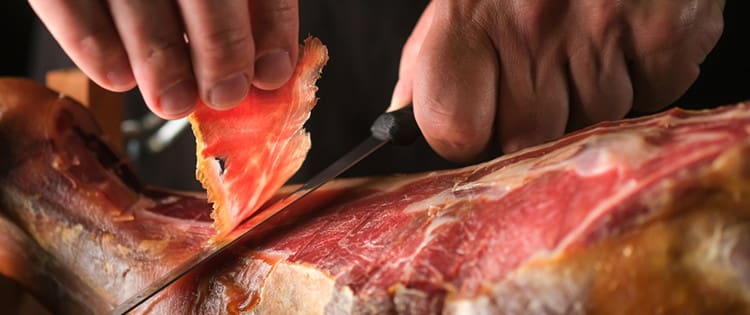Dry curing meat is an ancient method of preserving food.
It has been used for centuries across many different cultures, providing a way to store food while preserving its flavor and nutritional value.
In dry curing, a combination of several ingredients, including curing salts, seasoning, and spices are used to draw out the moisture from the meat and to saturate the muscle fibers with salt and other flavors, resulting in a much more flavorful product that can be safely stored for longer periods of time.
Dry curing is not only incredibly effective at preserving meats, but it also adds an incredible depth of flavor. The process of dry curing meat at home is both straightforward and rewarding – with a few simple steps, you can create an incredibly flavorful and nutrient-rich product that will last for months with proper storage.
In this article, I will provide a detailed overview of the dry-curing process, including the necessary ingredients and equipment, steps to take when preparing the meat for curing, and best practices for storing and enjoying your own dry-cured meats.
Ingredients Needed
Salt: Salt is the key ingredient in dry curing, as it acts as a natural preservative. It helps to draw moisture out of the meat, creating a protective barrier that prevents bacteria from growing.
Seasonings: Dry curing allows for flexibility in terms of seasonings, as you can use any combination of herbs, spices, and aromatics to add flavor to the meat. Some common seasonings for dry curing include garlic, black pepper, and bay leaves.
Nitrite or Nitrate: Nitrite and nitrate are added to dry curing mixes to help prevent the growth of bacteria and to enhance the color and flavor of the meat. These ingredients are available in the form of curing salts, which can be found at most specialty food stores.
Tip: The type of ingredients you use may vary depending on your choice of spices. The curing salts are, however, not a choice.
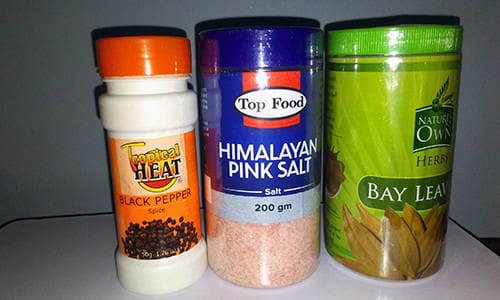
Preparing the Meat
Before you begin the dry curing process, it’s important to properly prepare the meat. Start by selecting a high-quality cut of meat, such as pork belly or beef brisket. Trim off any excess fat, and cut the meat into uniform pieces that are easy to handle.
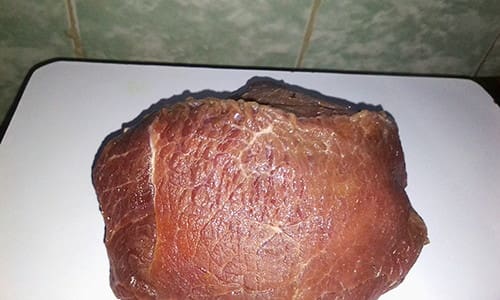
Mixing the Cure
Next, mix together the salt, sugar, and seasonings in a bowl. Be sure to use a ratio of about 2 parts salt to 1 part sugar, and add the curing salts according to the package instructions.
Mix the ingredients together until they are well-combined and evenly distributed.
You can skip this step and apply your cure directly without mixing first. In this case, be sure to apply the curing salt first before applying the rest of your ingredients. Doing so ensures that your meat is moist enough to allow the seasoning to stick.
Related: Recipes I Made From The Lost Super Foods Book: Canned Hamburger Meat
Applying the Cure
Once the cure is mixed, it’s time to apply it to the meat. Using your hands or a brush, rub the cure mixture onto the surface of the meat, making sure to cover it completely and evenly.
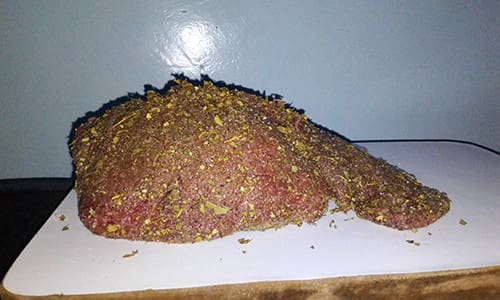
Storing the Meat
After applying the cure, place the meat in a clean container or plastic bag. Squeeze out the excess air, and seal the bag or container tightly. Place the meat in the refrigerator, and allow it to cure for at least a day.
The longer the meat cures, the more flavorful and tender it will become.
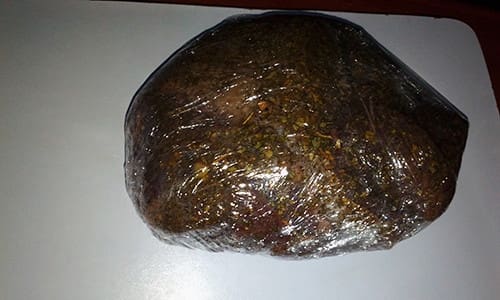
Checking the Meat
After 24 hours, check the meat to see if it is ready. The meat should feel firm and have a deep red color.
If the meat is still too soft or has a pale color, continue to cure it for an additional 2-3 days. If you’re using bigger meat chunks, they’ll need a much longer time to cure as opposed to thinner/smaller chunks which could take 1-2 days.

Rinsing, Drying, and Aging
Once the curing process is complete, you will need to rinse the meat in cold running water and pat it dry.
Then, place the meat in a cool, dark place and allow it to age for at least 2-6 weeks – the longer it ages, the more flavor it will develop.
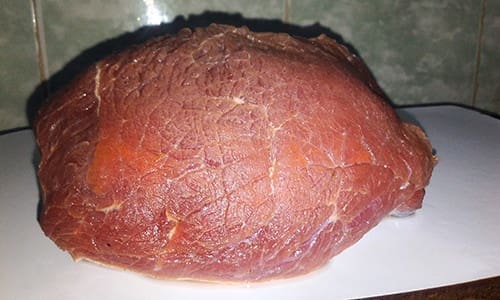
Enjoying the Meat
When the meat is ready slice it into thin pieces. Dry cured meat can be enjoyed on its own, or used in a variety of dishes, such as sandwiches, salads, or charcuterie platters.
Related: Making Machaca – Mexican Pemmican (Shelf Stable Meat)
Wondering why you should dry cure your meat? Here are some of the benefits of dry curing meat:
- Nutrition Retention – Dry curing helps to preserve a higher amount of important nutrients in the meat, including vitamins, minerals, and amino acids, to provide a nutrient-rich product that is packed with flavor.
- Improved Flavor – Dry curing helps to draw out and concentrate the flavors of the spices, herbs, and salt used in the curing process for an incredibly flavorful product.
- Longer Shelf Life – With proper storage, dry-cured meats can last for months, making them a great way to store and enjoy high-quality, flavorful and nutritious staples in your kitchen.
- Customization – With dry curing, you can customize the flavor and intensity of the product by adjusting the amount of salt and spices in the curing mix.
- Ancient Method of Preservation – Dry curing has been used for centuries as a way of preserving food, and it is still a popular method of preservation today.
- Cost Effective – Dry curing is a very cost-effective way to store and preserve food, as it does not require a lot of expensive tools or ingredients.
- Easy to Do – The process of dry curing meat is relatively straightforward and requires no special skills or knowledge to do.
- Cleaner Storage – Unlike wet curing, which requires packing the meat in a brine, dry curing does not require any storing of liquid, making storage much easier and cleaner.
Dry curing meat is a simple and effective way to preserve and flavor meat, using only a few key ingredients.
By following these steps, you can create delicious and unique dishes that are sure to impress your friends and family.
Whether you’re an experienced home cook or a beginner looking to try something new, dry curing is a fun and rewarding culinary technique to explore.
You may also like:
An Insanely Effective Way to Build a 5 Year Food Stockpile (Video)
